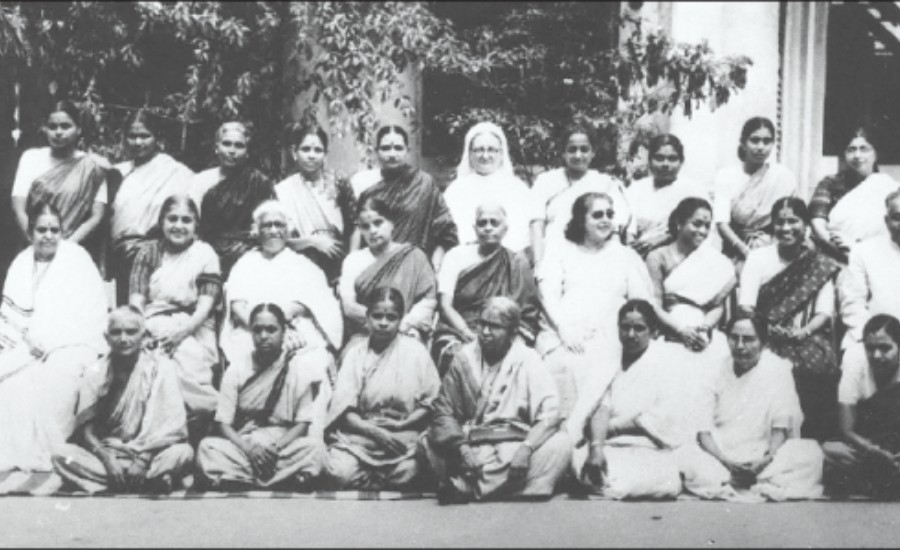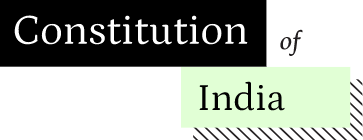
Unlike the American constitutional founding, which was exclusively led by men, the Indian Constituent Assembly included women. Until recently, the contributions and even the presence of these women were overlooked in public memory. However, what about the period before the formal constitution-making process?
The Indian Constitution was not solely the result of the deliberations of the Constituent Assembly; it was also deeply influenced by the constitutional imagination that existed before 1946. While we acknowledge that women played a crucial role in the independence movement, engaging in Satyagraha, civil disobedience, and more, did they also articulate a constitutional vision for India?
In 1917, influential social and political activists, including Margaret Cousins, Kamaladevi Chattopadhyay, Annie Besant, Muthulakshmi Reddy, and others, established the Women’s Indian Association (WIA) in Adyar, Madras. WIA rapidly grew into one of the largest women’s organizations in India, with a pan-Indian presence and played a pivotal role in addressing social issues like child marriage and the Devadasi system. Interestingly, it also advanced a constitutional vision for India and actively participated in constitutional negotiations with the British.
In the same year that WIA was established, the Montague Chelmsford Commission toured India in preparation for drafting constitutional reforms. WIA, as part of a 14-member all-women delegation, met the Commission and demanded franchise for women. Although the Commission rejected the demand, WIA persisted and made equal voting rights a central focus of political work in months to come.
Throughout 1917, WIA intensely lobbied and cultivated relationships with major political groups in India regarding women’s voting rights. This effort bore fruit as the Indian National Congress, during its annual sessions, regularly passed resolutions to remove disqualifications for women voting, as did its various committees. The Muslim League too, followed suit.
This marked a significant achievement for WIA. The support from major political parties on the issue of women’s voting rights had far-reaching consequences, as these parties, particularly the Congress, later incorporated these women’s rights into their formal constitutional demands directed at the British.
In 1918, the Southborough Commission visited India to review the question of franchise, among other things. This time, WIA, in collaboration with other women’s organizations, went all out, leveraging its cross country organizational machinery. Forty-five branches of WIA and other women’s organizations passed resolutions and submitted them to the Committee.
The Southborough Committee, in its report, acknowledged the overall aims of the petitions for equal voting rights for women. However, it felt that the social conditions of India were not yet ripe to extend the vote to women and dismissed WIA’s demands. Margaret Cousins, the General Secretary of WIA, responded to the Commission’s decision in a letter to the editor of The Hindu:
“On behalf of the members of the 46 Branches of the Women’s Indian Association, all of which have signed requisitions in favour of women suffrage, I protest vigorously against the decision of the Southborough Committee that the franchisee shall not be extended to women because, forsooth, “the social conditions of India make it premature”. Is this handful of men better able to judge of these conditions than were the thousands of Indian delegates to the Bombay and Delhi Congresses? These latter were the fathers, husbands, brothers, and sons of the women concerned and knowing at first hand their social conditions, with full understanding of what the necessary steps to women’s voting would be…Are the considered opinions of these representative bodies of Indian men and women to be flouted by these few Committee members, some of the Englishmen already known to be opposed to the grant of the vote even to their own Englishwomen and who are thus dated as behind the times?”
This was a powerfully articulated critique of British policy on the franchise for women and laid bare British hypocrisy. Despite another setback, the WIA persisted with its demand for equal voting rights.
In the early 1920s, Indian leaders began asserting that only a Constitution crafted by Indians would be acceptable. Concurrently, the womens’ movement in India expanded its demands from specific rights such as voting to encompass a more comprehensive constitutional vision. Annie Besant, the President of WIA, conveyed to British authorities that India would never accept a Constitution crafted in Westminster.
Taking the initiative, she established a ‘National Convention’ comprising 255 members, primarily Indian legislators. The Convention’s mandate was to draft a Constitution for India. Two WIA colleagues also participated, resulting in the Commonwealth of India Bill 1925 – a comprehensive document reflecting the constitutional visions of Annie Besant and other Indian leaders.
The document included a Bill of Rights encompassing freedoms such as expression and non-discrimination. Importantly, it featured a fundamental right addressing sex discrimination: ‘There shall be no disqualification or disability based on sex.’
Besant aimed to secure passage of the Bill through the British Parliament with the support of senior Labour Party leader Mr. George Lansbury. However, due to the Labour Party’s electoral loss, the Bill was stalled and not passed, thwarting Besant’s plan. Nevertheless, the Bill played a profoundly influential role in Indian constitutional thought. As highlighted by Niraja Jayal in Citizenship and its Discontents, provisions from the Bill were verbatim repeated in the Nehru Report 1928, influencing the final Constitution of India in 1950.
In the late 1920s and early 1930s, a constitutional and political churn occurred in negotiations between Indians and the British. The British, who had previously been indifferent to Indian constitutional demands, initiated steps to frame a new constitutional framework for India, later becoming the Government of India Act 1935.
The WIA actively participated in these negotiations, sending representatives to round table conferences and the Lothian Committee on Franchise. During this period, the WIA began making demands explicitly tied to India’s constitutional future, often expressed in its in-house publication Stri-Dharma, initiated in 1918 to be the voice of the Indian women’s movement.
In a 1931 issue, Stri-Dharma published an article titled ‘Women’s Place in the Future Constitution of India‘ outlining goals and principles for a future constitution:
1. That woman should be free to contest seats in the general constituencies subject to the same qualifications to apply as men.
2. In addition to any seats thus secured by women, a certain number or proportion of seats—say five percent as suggested by the Nair Committee— should be reserved for women in each provincial council, at least for a trial period of three general elections.
3. Reservation should be filled by any suitable way that may be determined by the next Round Table Conference.
4. That full adult franchise is secured for both men and women.
5. That any woman—married or unmarried—possessing any one of the general qualifications for the franchise would have the vote.
6. That for admission into the public services no woman shall be under any disability because of her sex.
7. Again we believe India will gain in power for good if it develops a woman’s side to its activities.
Equal voting rights, reservations in legislatures, the de-linking of women’s franchise from their marital status and a non-discrimination clause. For the time, these were rather remarkable and bold articulations of constitutional arrangements that were intended to protect and promote the rights of Indian women.
This article began by asking if women had a constitutional vision for India before the formal constitution making process of 1946 – 50? Evidently, they did. And so when we celebrate the women members of the Constituent Assembly, we must also pay attention to the women who were thinking constitutionally, much before the Constituent Assembly was a glimmer on the horizon.
